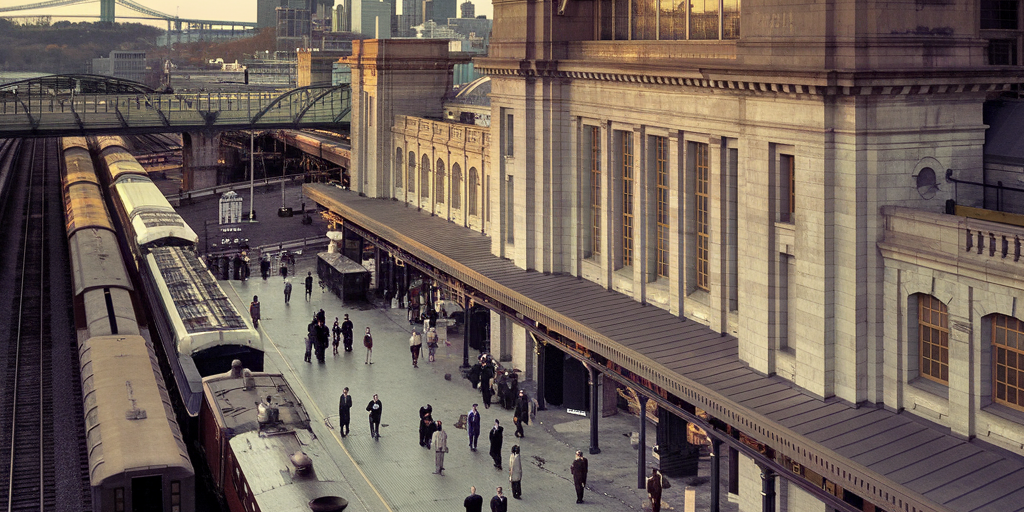Introduction: The Steel City on the Rails
Pittsburgh’s rise as an industrial giant was impossible without its railroads. In the 19th and early 20th centuries, railroads fueled the city’s steel empire, moved millions of immigrants, and connected Pittsburgh to the rest of the country. At the heart of it all stood Pittsburgh’s Union Station, a Beaux-Arts masterpiece and a symbol of the city’s golden age of rail.
This is the story of Pittsburgh’s railroads and Union Station, a journey through iron rails, grand architecture, and the city’s industrial might.
The Early Railroads: Connecting Pittsburgh to the Nation
In the early 1800s, Pittsburgh’s growing industries — steel, coal, glass — faced a major challenge: transportation. Riverboats served the region, but they were limited by seasonal water levels. The answer was the railroad boom of the mid-19th century.
Key Early Rail Lines:
- The Pennsylvania Railroad (PRR): Completed in 1854, connecting Pittsburgh directly to Philadelphia and the East Coast.
- The Pittsburgh & Lake Erie Railroad (P&LE): Known as the “Little Giant,” it served Pittsburgh’s industrial waterfronts.
- Baltimore and Ohio Railroad (B&O): Gave Pittsburgh a southern route to the Atlantic.
By the late 1800s, Pittsburgh was a rail hub — with lines radiating out in every direction, shipping raw materials in and finished steel products out.
Union Station (Penn Station): A Beaux-Arts Masterpiece
Completed in 1903, Pittsburgh Union Station (also known as Penn Station) became the grand gateway to the city.
Architectural Highlights:
- Designed by Daniel Burnham, famed Chicago architect behind New York’s Flatiron Building.
- Featured a stunning rotunda with a self-supporting dome — still one of Pittsburgh’s architectural gems.
- Served as the terminal for the Pennsylvania Railroad, once the largest railroad company in the world.
Union Station welcomed thousands of passengers daily — immigrants, businessmen, steel barons, and soldiers heading to war. For many, it was their first glimpse of Pittsburgh’s skyline and smoking steel mills.
The Railroads’ Role in Pittsburgh’s Growth
Railroads shaped nearly every aspect of Pittsburgh’s development:
- Industrial Power: Rails brought coal, iron ore, and limestone into the city — essential for steel production.
- Immigration Gateway: Trains carried millions of European immigrants to Pittsburgh’s factories and neighborhoods.
- Urban Expansion: Suburban rail lines gave rise to communities like Wilkinsburg, Dormont, and Carnegie.
By the early 20th century, Pittsburgh was one of the busiest freight hubs in America, earning the nickname “The Workshop of the World.”
The Decline of Rail and the Transformation of Union Station
The mid-20th century saw the decline of passenger rail as automobiles, buses, and planes took over. By the 1960s, Pittsburgh’s grand Union Station was serving only a fraction of its peak traffic.
Key Events:
- The Pennsylvania Railroad merged with New York Central, forming Penn Central, which later went bankrupt.
- Amtrak took over passenger rail in 1971, reducing routes and services.
- Union Station’s upper floors were eventually converted into apartments, known today as The Pennsylvanian.
While much of Pittsburgh’s railroad glory faded, the city remained a vital freight hub, with CSX, Norfolk Southern, and others still moving cargo through the region.
Union Station Today: A Living Landmark
Today, Pittsburgh Union Station still serves Amtrak passengers on routes like the Pennsylvanian and the Capitol Limited — a shadow of its former glory, but a beautiful reminder of Pittsburgh’s railroad past.
The rotunda and dome remain architectural treasures, protected as a historic landmark and beloved by architecture fans and history buffs alike.
Conclusion: Tracks That Built a City
Pittsburgh’s rise from a frontier town to an industrial powerhouse was paved in steel — but it was the railroads that carried that steel to the world. Union Station stood as the city’s proud front door, welcoming millions and fueling an era of unprecedented growth.
Today, Pittsburgh’s railroad legacy lives on in its architecture, its freight lines, and the very neighborhoods that grew along the tracks.









